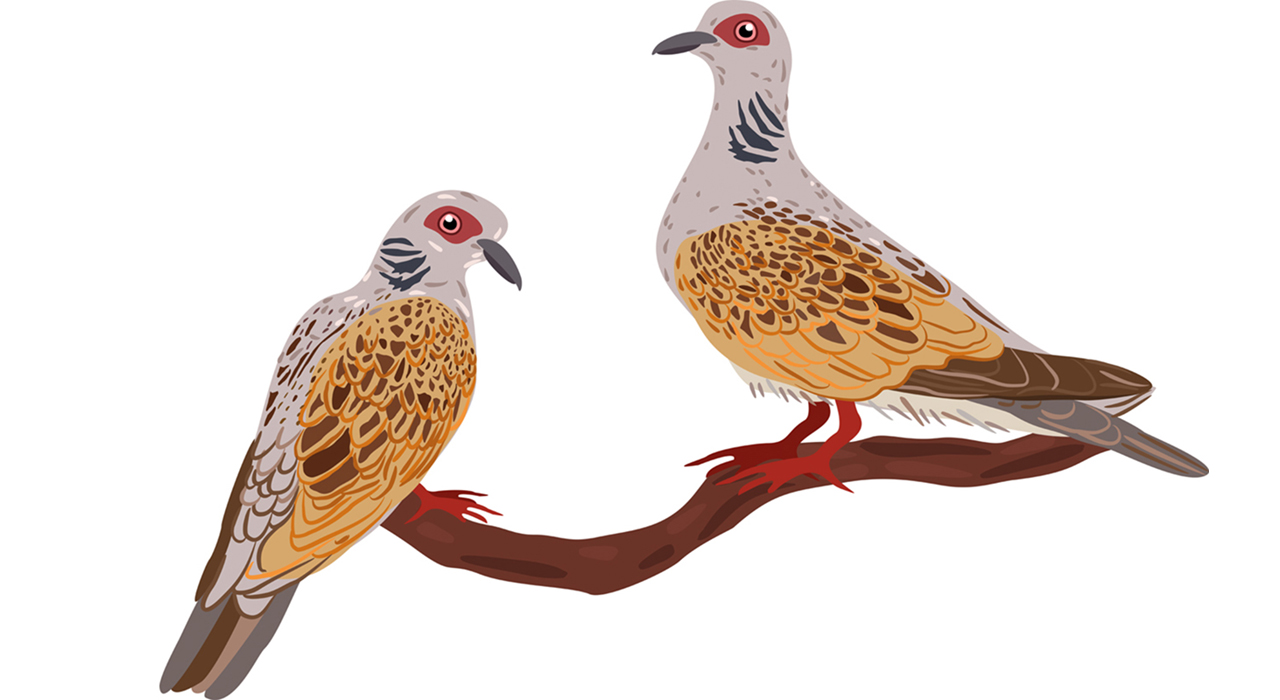I’ve seen turtle doves only about half a dozen times. And no, one of them wasn’t my true love giving me two turtle doves as a gift on the second day of Christmas.
Most sightings have been on the southern fringes of the North York Moors National Park. Still seared into my mind’s eye is the turtle dove I came across a few years ago gently purring from a red pantiled roof in a village near Cropton Forest.
I’ve been fortunate enough to see rather more partridges, the bird that rubs shoulders with turtle doves at the easy-to-remember end of The Twelve Days of Christmas. The most recent one was encountered just half a mile from where I live to the north of Bradford, but it was skulking along the edge of a field rather than perched in a pear tree.
Sadly, both partridges and turtle doves – names merrily belted out by carollers for well over a century – haven’t been having a good time of late. Turtle doves still appear to be hanging in there, but we’re unlikely to come across any of them over the festive period. Despite the bird’s association with Christmas, the UK’s daintiest pigeon is actually a summer visitor.
The scale of its demise is illustrated by the results of two surveys half a century apart. Back in the 1970s an estimated quarter of a million turtle doves migrated here from Africa every spring, but more recently the British Trust for Ornithology has reported that our summer population has plummeted to just a few thousand birds. The reason for its rapid decline is said to be the loss of much of its wintering grounds in the Sahel region through drought and changes to farming methods, plus thousands being illegally shot as they fly over Malta, Spain and France on migration.
Fortunately, there’s a bit of festive cheer for the species. A huge effort to provide suitable habitats in the UK appears to be benefiting the bird. Rewilding efforts are slowly creating new territories, with wildflowers like fumitory, scarlet pimpernel and vetches providing the protein-rich seeds that form an important part of their diet. Because of this, parts of the North York Moors are becoming a turtle dove stronghold.
Partridges are another rural horror story, but here too there are small reasons for optimism. The grey partridge, to give it its full name, has been described as the canary of the cornfield, its demise a wake-up call that highlights the simple truth that farmers can’t go on squeezing more and more profit from their land. Indeed, a rapid decline in grey partridge numbers was noticed within a few years of intensive farming practices being introduced.
New machinery ripped up fields right to the boundaries, leaving the birds no cover for their nests. Chemical sprays killed insects they need to feed their young. Cornfields were only briefly left as stubble, giving the birds just a short feeding window before new crops were drilled. Thankfully, though, some farmers in Yorkshire have now discovered that there’s a link between healthy bird populations and healthy crops.
For grey partridges and turtle doves everywhere, more still needs to be done long after those boisterous renditions of The Twelve Days of Christmas have faded. If greater conservation efforts are not forthcoming they will live on only in song.







Leave a reply
Your email address will not be published.